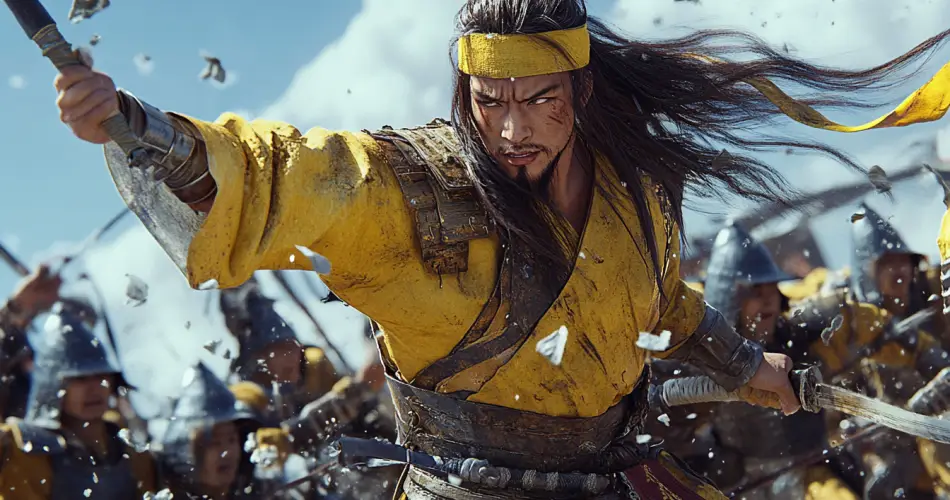Throughout history, when people have been pushed too far—by oppression, injustice, or the quest for freedom—they’ve risen up, sometimes with devastating consequences.
Some of the bloodiest uprisings left entire empires shaken, leading to enormous loss of life and change in history. They’re a testament to human resilience and the high price of defiance.
In this post, we’re diving into seven of the bloodiest rebellions the world has ever seen. From ancient times to more recent events, these rebellions reveal both the power and the peril of standing up to authority.
The Maccabean Revolt (167-160 BCE)

Casualties of the Maccabean Rebellion: 40,000 to 80,000 people in 3 days
The Maccabean revolt was a revolution of the Jewish people against the Seleucid empire under the Hellenistic king Antiochus IV Epiphanes. The rebellion was sparked by Antiochus’ attempt to get rid of Jewish culture and religion and the brutal punishment he melted out on Jews who disobeyed his orders.
The Maccabean Rebellion, led by Judas Maccabeus and his brothers (the rebellion is named after them), featured bloody guerilla warfare and many atrocities. An account of the uprising can be found in the Bible in Maccabees 1 and 2.
According to the Biblical records, King Antiochus ordered his men to cut down anyone they met in the street. Men, women, and children were killed indiscriminately. Women who had circumcised their children were hanged with their babies tied to their necks. Men were burnt alive and thrown headfirst from high walls. In one report, more than 80,000 Jews were killed in a single day.
The rebels that had fled to the countryside attacked Hellenized Jews and Greek officials. The insurgents killed those they could find and burnt down villages. Young boys were also forcibly circumcised.
This brutal rebellion also led to widespread food scarcity. This probably increased the total casualties caused by the unrest.
6. The Third Servile War (73-71 BCE)
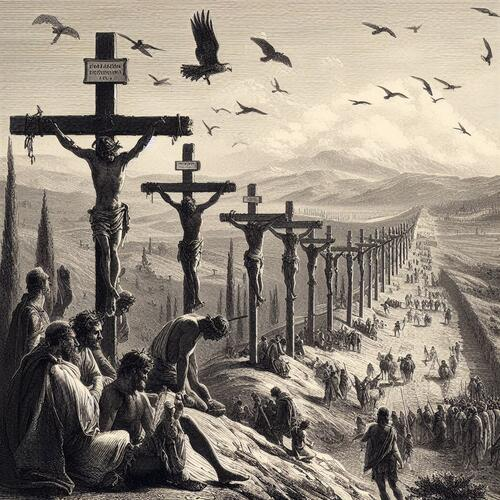
Death Toll of the Third Servile War: 70,000 to 120,000
The Third Servile War was a major slave uprising in the Roman Republic. This rebellion followed two earlier, smaller uprisings known as the First and Second Servile Wars.
The war began in the Roman city of Capua, where a group of gladiators fought their way to freedom using kitchen utensils. Their leaders included the famous Spartacus, Crixus, and Oenomaus.
After leaving Capua, the slave army retreated to a more defendable position on Mount Vesuvius, where they repelled several minor Roman detachments. The goal of the rebellion is unclear. According to some sources, the slaves were fighting to escape from Rome, while others claimed that they had eyes on the city of Rome itself.
The Roman Senate finally took the rebellion seriously and dispatched eight legions under the leadership of Marcus Licinius Crassus. The rebelling slaves stood no chance against a proper Roman army.
Most of the slaves were killed in battle, and about 6000 others were captured and crucified along the Appian Way. With a death toll of up to 120,000, the third servile war is one of the bloodiest rebellions in the history of the Roman Republic.
5. The Indian Rebellion of 1857

Death Toll of the Indian Rebellion of 1857: 100,000 to 150,000
The Indian Rebellion of 1857 was India’s first major uprising against British rule, aiming to re-establish an independent and indigenous leadership. Indian troops, known as sepoys, led the rebellion and were joined by thousands of civilians.
The rebellion was sparked by rumours that British officers had shown disrespect toward Hindu and Muslim beliefs. Outraged, the sepoys revolted, killing their officers and marching on Delhi.
Through the course of the rebellion, both sides committed several atrocities. Women and children were killed indiscriminately, and there was severe unrest. When British forces eventually regained control, thousands of sepoys and civilians were executed, sometimes through horrific means such as being tied to cannons and blown apart.
The devastating rebellion led to an estimated 50,000 sepoy deaths and an additional 100,000 civilian casualties.
4. The Yellow Turban Rebellion (184-205 CE)

Death Toll of the Yellow Turban Rebellion: 2,000,000
The Yellow Turban Rebellion was a peasant war that broke out in the Eastern Han dynasty under Emperor Ling and lasted for more than 21 years. The rebellion got its name from the characteristic headwear of the rebels.
According to Chinese records, the government officials under Emperor Ling were extremely corrupt; they neglected the state’s affairs and imposed heavy taxes on the people. The widespread corruption, coupled with poor agricultural yields and the outbreak of what might have been the Antonian plague, led the people to believe that the Emperor and the dynasty he represented had lost the mandate of heaven.
Sensing weakness, the Chinese general and Taoist leader Zhang Liang mobilized thousands of people to revolt. The rebels attacked government officials, burnt villages and looted throughout northern China. In retaliation, the imperial army executed thousands of people branded as sympathizers.
Although the rebels were eventually defeated by General Cao Cao of the Imperial army, the violence, food scarcity and plague led to the death of up to 2 million people. Making it one of the bloodiest rebellions in human history.
3. The Haitian Revolution (1791-1804)
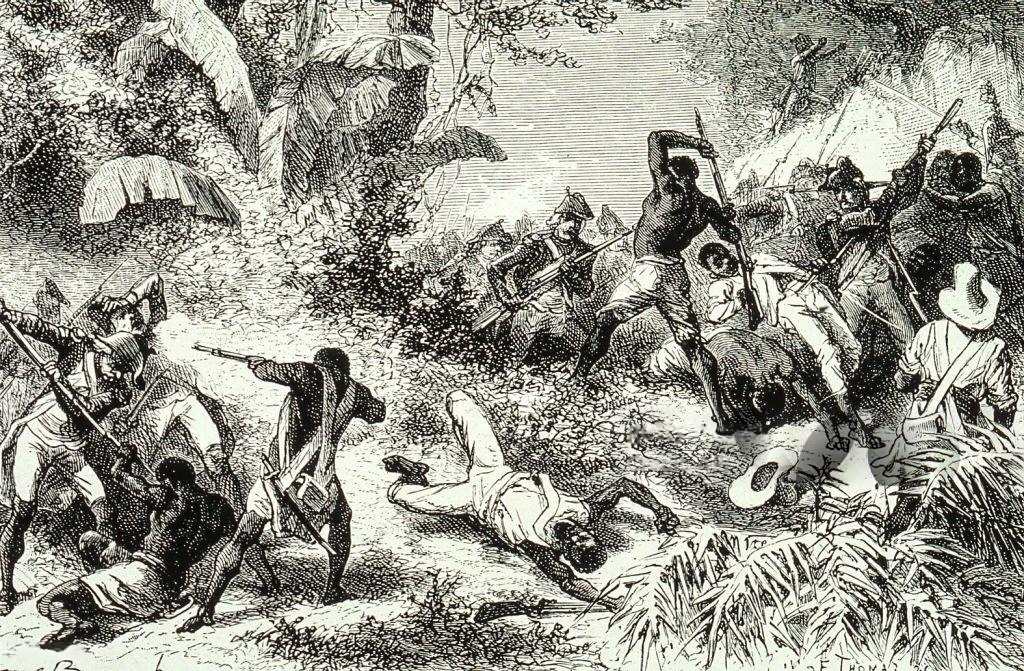
Death Toll of the Haitian Revolution: 200,000 to 300,000
The Haitian Revolution was a slave rebellion involving the Africans and Mulattoes (Mixed race) enslaved on the French Colony Island to Saint Domingue to work on the plantations. The slaves on the Island were about 500,000, and they outnumbered the French colonizers at a ratio of 10:1.
The rebellion was helped by the fact that many of the slaves served as auxiliary soldiers under the French, and they had extensive military experience. Thus, the rebels were able to match the French army in tactics and military manoeuvres.
The former slaves were particularly interested in taking revenge for the terrible treatment they suffered under French rule. White men, women, and children were killed indiscriminately. In retaliation, the French army also tortured and executed any black person they could find.
At the end of the rebellion, the French were effectively driven out of the Island in what would become the first successful slave rebellion in recent history. According to records, more than 200,000 black slaves were killed during the conflict. Also about 75,000 French citizens were killed.
2. The An Lushan Rebellion (755-763 CE)

Death Toll of the An Lushan Rebellion: 13 to 25 million people.
The An Lushan rebellion, named after its leader, is one of the most bloody wars in history. It lasted for eight years and through the reign of three Tang Emperors.
According to records, An Lushan was an official in the Tang Army appointed to be in charge of the entire north and lower regions of the Yellow River. He was also given control over the strategically important military garrisons. These appointments gave him control of up to a third of the imperial military.
Citing the extravagance of the royal army and the corruption in the court, An Lushan rebelled and immediately marched on the capital, which was sparsely defended. He conquered it and named himself the Emperor of a new Yang dynasty.
In an attempt to consolidate his power, An Lushan went after the remaining Tang strongholds in China but was unsuccessful. When the rebel forces of An Lushan took the city of Chang’an in southern China, more than 500,000 people were put to death.
In another instance, General Tain Shengong, a former rebel general, ordered the bloody massacre of foreign arab and Persian Muslim merchants in Yangzhou. He did this to prove his loyalty to the Tang government. It is estimated that thousands of people were killed in this event.
According to some reports, more than 36 million people were killed on both sides during this rebellion. If this is true, it would mean that one-sixth of the world’s population died during this conflict.
1. The Taiping Rebellion (1850-1864)
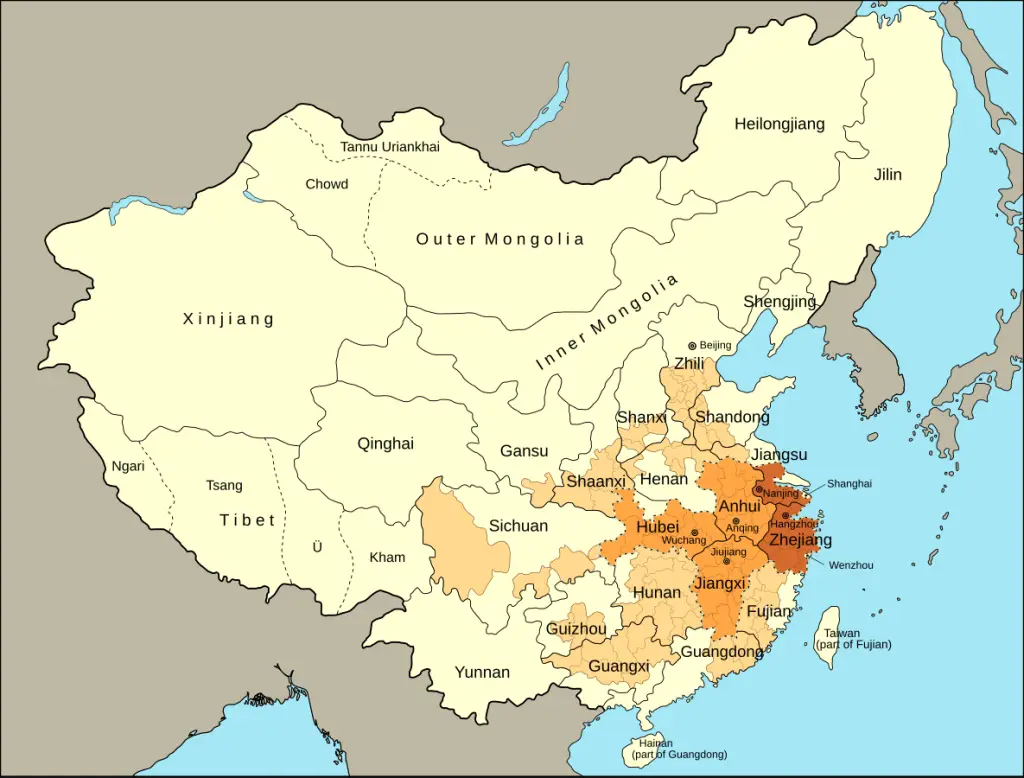
Death Toll of the Taiping Rebellion: 20 to 30 million people.
The Taiping Rebellion tops our list of the bloodiest rebellions in history. It was a radical religious and social uprising started by Hong Xiuquan in the 19th century during the Quin Dynasty. The rebellion occurred in a Chinese society battling widespread famine, political corruption, and natural disasters.
After failing the notoriously difficult Chinese civil service exams three times, Hong claimed to have received a vision from God. According to him, God ordered him to establish a Heavenly Kingdom of Great Peace and save the people from suffering.
Using this heavenly message and a promise of prosperity, Hong gathered enough people to launch his rebellion. The rebels established their capital at Nanjing, renamed Zhejiang “the heavenly capital”.
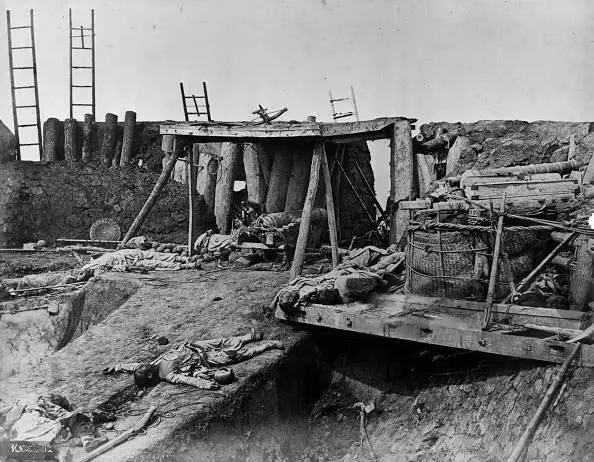
The imperial Quin army did not respond to the threat of the Taiping rebels early enough. When they eventually responded, the rebels were strong enough to defeat several imperial armies and even take more cities from the central government.
The Taiping Rebellion lasted for over 14 years. However, with a change in the imperial military structure and the help of the British government, the Quin army was finally strong enough to defeat the rebels.
Eventually, Nanking was taken by the imperial army in a battle that led to the death of up to 100,000 people in three days. It is estimated that more than 20 million people died during the Taiping Rebellion, making it one of the bloodiest conflicts in world history.
Read more about the Taiping Rebellion here
Conclusion: Rebellions and Their Lasting Impact
There is no denying the devastating impact of rebellions on civilized societies all over the world. These conflicts have played an important role in disrupting the status quo and opening the way to new ideas. They were necessary in the fight against oppression, exploitation or foreign control.
Without these bloody rebellions and revolutions, we might not have advanced as rapidly as we did.
